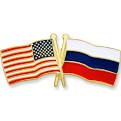For some time, analysts, think tankers, and journalists prevailed in the domain of “post-truth” and “alternative facts.” It is only recently that academics plugged into the debate. The World Congress of Semiotics held in Kaunas, Lithuania, on June 26-30, 2017, was good proof of this.
Semiotics is an academic discipline that studies hidden meanings in signs, messages, and symbols, and it can contribute to the “post-truth” debate in two ways. It can explain the general conditions that make possible the easy proliferation of untrustworthy information and it can help with distinguishing forgery from reliable information.
Let’s start with a broad picture. Widely spread phony news and information fraud has become part of our everyday lives due to two relatively recent changes. One is the merger of propaganda and commercials. The times of ideological brainwashing have gone. Now, instead of indoctrinating people, propaganda often operates through advertisement and promotion. For example, the Eurovision song contest in Kyiv and the Games of Islamic Solidarity in Baku were both cultural/sporting mega events that propagate and advertise their home countries as commercial products.
A second important change is related to the global media environment. As pundits say, the traditional media is gradually giving way to a more complex social milieu where each person, in principle, can engage with and create interactive media (blogging, making YouTube videos, etc.). The media market continues to be increasingly complicated. But who controls the quality of digital content?
Let’s compare the information market with our everyday consumption. When we buy something in the supermarket, we rely on trusting the producers and sellers, and there are legal mechanisms that protect us from fraud. We know that if we buy something from a street vendor, our expectations might not be met. The concept of spending money for a product means that we are naturally more selective. In the information sphere, we don’t pay for all of the data, ideas, and opinions we consume. In fact, a lot of it is free. Free information blurs the lines between quality and the lack of it, especially if the harm caused by consuming a bad product is not immediate (cause-and-effect is hard to establish).
Verification is difficult in our new mediated reality. And different societies have different attitudes toward facticity. In Russia, for example, most people interested in politics would likely agree that full disclosure about issues is often unattainable. A good illustration is the recent court verdict on Boris Nemtsov’s assassinators. All of the suspects were sentenced, but few would say that the whole truth was unveiled. Facts are nebulous and incomplete.
Encounters with undeniable facts might cause deep cognitive dissonances in a society. A perfect illustration is the interview with the mother of the Russian soldier who was recently captured in eastern Ukraine. The woman, a sympathizer of Russian television’s Channel-1 and its chief propagandists Vladimir Solovyov and Dmitry Kiselyov, confessed that she tends to believe that there are no Russian troops in Ukraine, and that Ukrainians therefore have no reasons to hate or blame Russia. But, how can her son have been caught in Ukraine? The result: “perhaps I don’t understand something,” the mother said at the end of the interview.
As for the West, as a semiotician claimed in Kaunas, the “post-truth society” left us only with different rhetorical strategies, nothing more. What seems to be false from one viewpoint makes some sense if the angle is changed and a different view is taken. Also, there is the associated dynamic whereby those with pre-ordained viewpoints tend to consume fake news that resonates to them, which in turn helps justify the production of it. There is reason to celebrate the post-modernist plurality of voices, but we should also admit that some of these voices exist to intentionally distort reality. Multiple techniques of “information framing,” as semioticians would call it, include biased headlines, presentation of marginal figures as “reputed experts,” and so forth.
How can we identify manipulative information and propagandistic disinformation? Here are some semiotic recipes:
Sign one: information that tries to mislead us often oversimplifies reality and leaves no space for different interpretations. In other words, issues are presented in black and white terms.
Sign two: usually manipulators appeal to passions and emotions. They seek to mobilize people’s rage and play with their feelings of disdain or resentment. Sensational exclamations are usually widely used for instigating information warfare.
Sign three: coordinated campaigns involving similar misinformation often coming from different sources simultaneously. Too much attention on one specific topic could be suspicious.
Sign four: artificial and superficial analogies and parallels. For example, when we hear from the Russian Foreign Ministry that Russia’s role in Syria is the same as its role is in Ukraine and Georgia: the continuation of the Soviet Union’s struggle against global evil (which has many masks: fascism, terrorism, barbarity, etc.). Storylines like this are good indicators of state-sponsored propaganda.
In the information manipulation industry, non-existent news is relative rare and fact denial is more commonplace. Ivan Krastev, a leading European-based political scientist, sees this as a core element of Moscow’s political strategy: Putin knows that he says untruths when he denies Russia’s military involvement in Ukraine, but he probably does it intentionally, thus mimicking what he sees as earlier Western lies.
Thus far, studies of Russian foreign policy propaganda focus mainly on the “senders” (the Kremlin and its affiliated media outlets), while the “receivers” (Western audiences) remain in a relative shadow. From a semiotic perspective, this looks unbalanced. How much do we know about the groups of people in democratic countries that are susceptible to the arguments coming from Moscow? Who are the hundreds of thousands of subscribers, watchers, listeners, and readers of the Kremlin’s alternative worldviews? Semioticians would definitely encourage scholars to analyze Kremlin propaganda as a sphere involving those in the West itself. This might enlighten us about the complexities within European and American societies that we otherwise might not have noticed.











